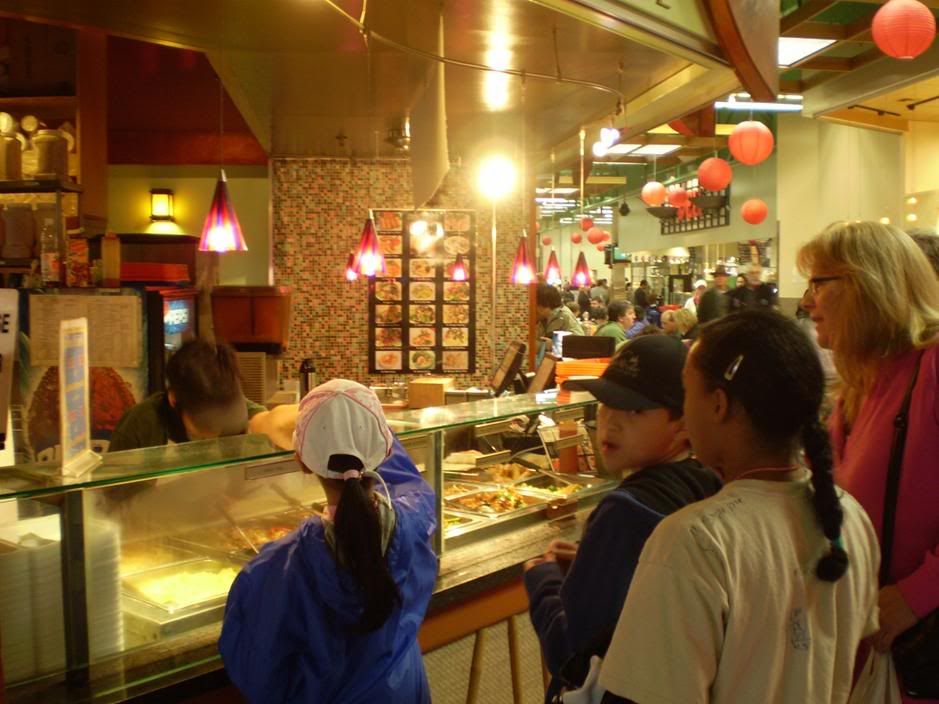On this, my fourth trip to the Pacific Northwest, Seattle finally demonstrated why it has a reputation for rain. Based on my previous visits, I was beginning to think it was just an elaborate ploy to prevent more Californians from moving to the city.

Joining me in the adventure this year, my sister arrived at the Seattle airport - traveling from Wisconsin - about 45 minutes before my flight came in. She met me at my baggage carousel and we hoisted our suitcases aboard a city bus. Next, we made our way to our initial lodgings at the Green Tortoise Hostel, which is located downtown on Pike Street, adjacent to the Pike Place Market.

In operation since 1907, Pike Place Market is the oldest continually operated farmers' market in the U.S. The market is built into a steep hill on the Elliot Bay waterfront, with several levels located below the main level that you enter from Pike Street. These levels are indoors and make the market an entertaining playground on a rainy day.

Here in Post Alley, the photographer in the dark foreground is taking marketplace pictures of a wedding couple.The bride must be freezing her knickers off in the shoulder-less gown, but she appears to be a Seattle native, as she had the foresight to complete her ensemble with rubber rain boots. In the sunlit background, three people examine the 'Gum Wall.'

Here, the wedding couple heads upstairs for warmer digs.

A Seattle landmark that will have germaphobes pulling out their hand sanitizer, the Gum Wall had its beginnings in the early 1990s. Patrons waiting in line to buy tickets at the Market Theatre affixed their used chewing gum to the outside walls. Two complete gum removals were performed before the theater gave up and the wall grew into a de facto public art installation.

If you search out and photograph graffiti as I do, Post Alley promises to entertain.

The market's upper street level contains fresh flower and produce stands, fishmongers and craft stalls. Local farmers and craftspeople sell their wares year-round in the arcades off of the rented tables they lease from the Market on a daily basis. This tradition is in accordance with the Market's mission and founding goal: it allows consumers to "meet the producer."

All I can register in regard to this photo is disappointment... Hey, I thought bakers were supposed to wake up earlier than I do!

Arguably, the most famous stall in the market belongs to the fellows at Pike Place Fish Market.

The Pike Place Fish Market is known for its habit of hurling customers' orders across the shopping area. A typical routine will start with a customer ordering a fish. Then the fishmongers, wearing orange rubber overalls and boots, call out the order, which is loudly shouted back by all the other staff. At this point, the original fishmonger will throw the customer's fish behind the counter for wrapping. While working, the staff continually yell to each other and chant in unison as they toss around various fish.
Above the areas in which they throw fish, the market hangs a sign that reads, "Caution: Low Flying Fish."

Observe carefully the monkfish, packed in ice. Hidden below the ice, a rope is tied to his tail. When customers step in close... just a little closer now... to observe his handsome features, a tug on that rope makes him move alarmingly, giving those customers a delicious little scare.
Carina


















































